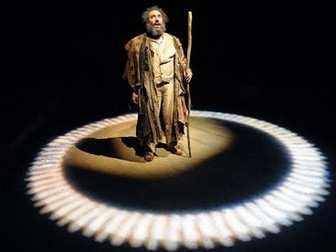The Tempest worksheet log scene A3 S1
<p>The Tempest worksheet containing an extract from Act 3 Scene 1 of the play, Ferdinand and Miranda’s log scene. The extract is followed by a number of questions and an extension which will stretch pupils and allow for higher order thinking. Useful resource to introduce the characters’ love story in the play and allow them to think of context and power dynamics between the characters.</p>

